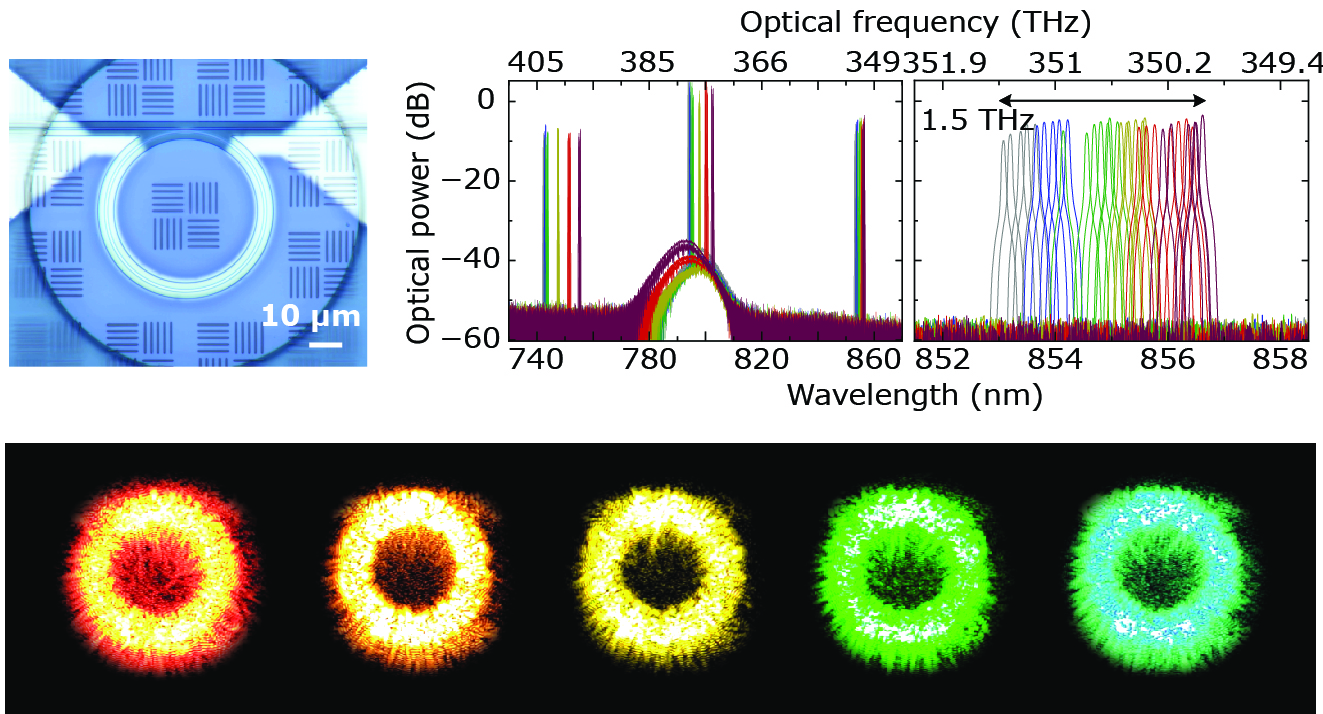
(Top) Optical parametric oscillation device with an underlying thermo-optic heater. The heater enables continuous tuning of the OPO output, in this case targeted to be the idler near 853~nm, across 1.5 THz (nearly 4 nm). (Bottom) Series of 'green gap' OPO devices, producing light from the red edge of the spectrum near 625 nm to the green edge of the spectrum near 532 nm.
Our groups uses optical parametric oscillation (OPO) in photonic integrated circuits (PICs) as a means to generate different lasers colors, especially in the visible, using a common near-infrared pump source. We have recently published two papers on PIC-integrated OPOs that expands the our ability to control the generated laser light and make them more useful for applications in quantum science and metrology.
In the first work, we combine OPOSSUM - a method to achieve wavelength accuracy in OPOs - with integrated buried heaters to achieve continuous tuning of the OPO output by 1.5 THz. Such continuous tuning is essential to make sure that the OPO can precisely target a desired wavelength, such as one associated with an atomic transition. We also show that we can suppress low frequency noise (up to 5 kHz) in the OPO output by many orders of magnitude through feedback on the heater drive.
In the second work, we show how OPO can be tailored to access the entirety of the so-called 'green gap' spectral region, which is known to be a challenge for typical semiconductor diode lasers. Through tailored OPO resonator dispersion across a few devices and using a new approach that lessens the OPO output wavelength sensitivity to geometric changes, we are able to achieve dense spectral coverage across the green gap when tuning a near-infrared pump laser. More details can be found in the NIST press release; the work has also been reported on by the IEEE Spectrum, Optics & Photonics News, and Physics World.